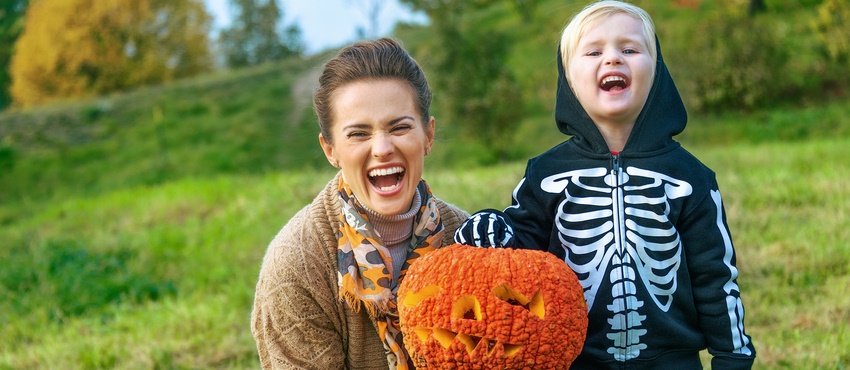How scary is too scary for your child this Halloween?

Halloween is almost here, so that means your kids are being flooded with images and references to ghosts, monsters and other spooky creatures. But how do you know if any of this subject matter – whether it’s on TV, at the movie theater or in public – is too scary for your child?
“How kids react depends on temperament,” said Alissa Briggs, PhD, a licensed psychologist with expertise in assessing and treating neurodevelopmental and mood disorders. “Kids who are anxious, tend to get overstimulated or who startle easily may need help preparing for Halloween, but that doesn’t mean they should avoid it.”
In fact, avoidance could even increase their fears. The key is to find a balance between your child participating in an activity, such as trick-or-treating, and them still feeling confident and in control.
Here are some general guidelines to follow this Halloween, but always remember that you know your kid best.
Early childhood
At this stage, your child does not yet fully grasp the differences between what is real and what is imaginary. For example, your child might think that wearing a mask really makes you a monster, instead of just being part of a costume.
If your kid is interested in watching a Halloween-related movie or TV special, try choosing one that is animated and has a happy ending.
You might also want to go through some practice runs with your child’s costume so that they become used to dressing up and used to seeing others dress up. And remember, neutral costumes are a much safer bet than scary ones. Go for a pumpkin or cat costume this year and transition to Frankenstein’s monster or Dracula when they’re older.
And if your child gets spooked by darkness, go trick-or-treating earlier in the day before night falls.
Childhood
Many (but not all) kids actually enjoy being scared as they get older and can recognize that what they see on a screen isn’t real. But it’s still important to be careful with what types of media they consume: Make sure that movies and TV shows don’t include gore or physical harm, especially violence toward children around their age.
If your child wants to go trick-or-treating but is still nervous, create a timetable and map out the route you all will take. Talking to your child about what they can expect can help assuage many of their fears and anxieties.
And if trick-or-treating is still too overwhelming, enlist your child’s help in passing out candy at home.
Early adolescence
Some kids still might scare easily, even as they become tweens and teens. Reassure them that it’s OK to be scared and empower them to speak up if their friends want to watch something scary.
At this age, your child might also be ready to be scared more than ever before, but you should still stick to flicks that are light on the gore and heavy on a happy resolution. Watching these movies with your kids is also a great way to not only bond with them but also gauge what they can and can’t handle.
Late adolescence
If your teen has handled scary material well in the past, they might be ready to visit a haunted house attraction this Halloween. Be sure to check out age recommendations and if the attractions have a no-touch policy beforehand.





